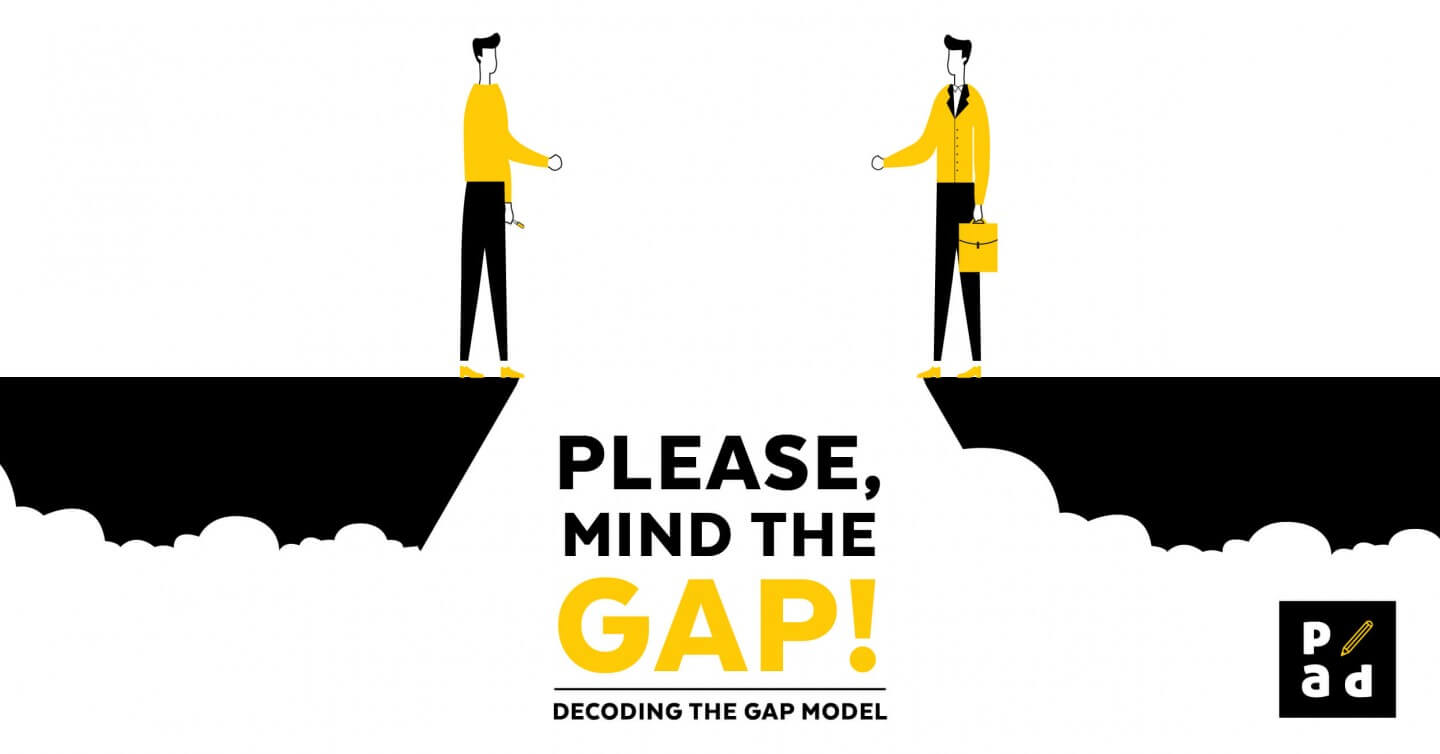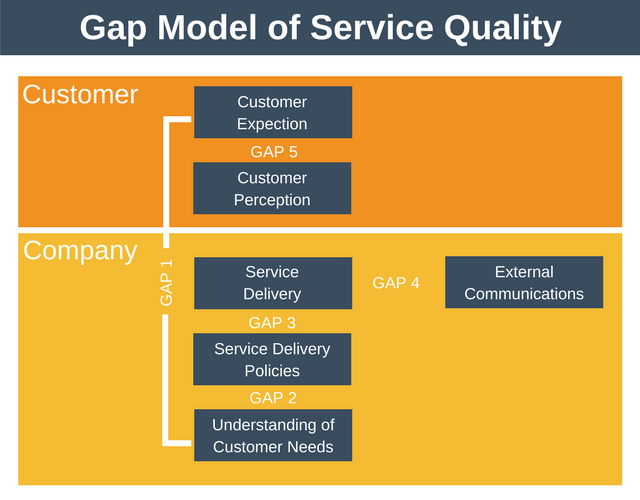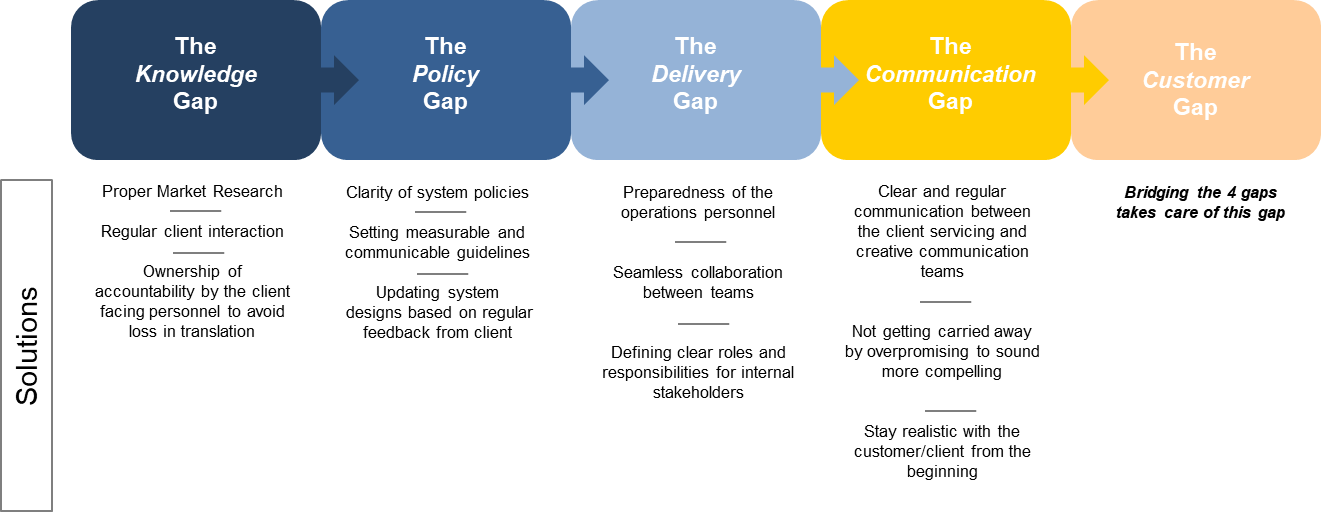PLEASE MIND THE GAP
“Customer is King” is a motto that product and service providers have been swearing by for years together. It perfectly accentuates the importance and centrality of customers to any business under the sun.
However, the customer’s kingship has assumed a new power in today’s day and age with digital access and social media acting as new age armoury. Apart from making them more aware and informed, its given them a voice of reason. They demand quality which is superior, elaborate and customized.
As we are marching towards giving our customers the best and the most efficient branding solutions, it is a prerogative to put our best foot forward. The current environment is dynamic and complex at the same time, which requires us to step up our game to provide them with cutting edge, sophisticated services that are at par with the international standards or delivery by maintaining a touch personalization.
It is easier to understand and manage customer expectations when products are considered. However, the business that we are in i.e. service provision, the dynamics between the consumer and service providers are more complex than what meets the eye. In our industry, our deliverables are a mix of tangibles as well as our service towards our clients, which in most cases determines the response to the tangible deliverable.
In the service delivery journey, there is multiple elements right from the customer’s expectation to final delivery. These elements interact with each other. When these elements are not in sync with each other, it may lead to gaps that give rise to dissatisfaction amongst consumers.
First time introduced by Valerie Zenthaml and the Center for Retailing Studies at Texas A & M University, the Service quality model helps to identify different gaps in the process of service seamless service delivery as well as an edge over competitors.
THOROUGH ACCOUNT OF EACH GAP – DESCRIPTION AND BRAND STORIES
GAP 1: KNOWLEDGE GAP
The Gap Between Customer Expectations & Company’s Understanding Of The Expectations
This gap exists between the customer’s expectations of the service and the service that the company actually provides. This gap widens when there is misunderstanding or the lack of it between the client and the company. This gap is subject to the service providers’ efforts in the direction of strengthening the relationship.
This gap is extremely pronounced in cases where the service provider is a global entity that is trying to serve another market, trying to strike a balance between maintaining the global standards of service and serving the local customer.
Uber came in from shores afar to with a unique proposition back in the day, the convenience of booking a cab in the touch of a finger. What started as a fairly simple peer to peer ride hailing app interface in the United States, was brought to India as is.
A global solution and global strategy were applied without much regard to layered local nuances.Uber Perceived that all that the Indian audience wants is the ease of booking a ride, just like its western counterparts. But locally bred service provider Ola correctly understood and internalized the expectations of the Indian audience. They knew that the market is spoilt for choice and the audience will expect different taxi options that fit their pocket. Thus the offerings share, Micro, Mini, Prime, Prime Play, Auto, Lux, Rentals, and Outstations came into being, wherein Uber only had 5 major offerings.
Moreover, Uber’s global strategy was born in a market with a near complete smartphone penetration. Their “one size fits all” approach took 2 whole years to shed in India and allow cash payments. But by then Ola had established its supremacy in the market.
This is an apt representation of how a brand can stumble if there is an unpluggable gap between the service provider’s perception of the expectations versus the actual expectations AKA Knowledge Gap
GAP 2: THE POLICY GAP
Gap between Understanding of Customer Needs & Their Translation into Service Policies
Even if the company has perceived the customer’s expectations correctly, this gap occurs when that service quality expectation cannot be made measurable or cannot be translated into the correct performance or delivery standards for it.
To take an example, we discuss the case of Park Hyatt. It’s been one of the most sought after luxury hospitality destinations all over the world, known for its impeccable service standards. For a service giant that has a global equity, maintaining a uniform service delivery standard becomes crucial. For example, at a luxury destination like Park Hyatt, customers come with certain expectations such as swift problem resolution, or prompt room service.
The hotel chain ensures that a policy gap does not occur. The Hyderabad branch of the hotel translates the service goals as per the global standards making sure that the expectation is not compromised. As an example, the hotel follows a policy of taking a maximum of 15 minutes for any technical problem resolution. The engineering department is committed to solving any flagged concern by the guests in less than 15 minutes no matter what.
GAP 3: THE DELIVERY GAP
The Gap between Service Policies & Actual Service Delivered
There are factors that could lead to the service specifications not being adhered to. In such a case delivery falls short of quality expectations. This may feel like a betrayal on the part of the company towards the customers.
Everyone likes their pizza hot and fast. So Dominos promised a 30 minute delivery in America in 1973. The pizzas had to get delivered within the 30 minute window; else it would have to be paid for by the company. As a result, there was more than one case where the company riders got into legal mess due to reckless driving. People were severely injured in some cases and slapped lawsuits against the company in 1993. Considering the sensitivity of the situation, the proposition was discontinued in the country.
Almost a decade later Dominos decided to introduce the long forgotten promise to India. However attractive the proposition for a freebie loving country it may be, it was a very hefty risk taken on their part given the logistical and infrastructural constraints.
But Dominos India left no stone unturned to make sure that the scope for delivery gap is completely cancelled out, without compromising on rider and civilian safety. CEO Ajay Kaul himself rode for 8-9 minutes in each direction with the store as locus to fool-proof the delivery guarantee. The company defines this 8-9 km radius as its “Lakshman Rekha” and no delivery person is supposed to serve areas outside of this purview.
Their service delivery guidelines are as follows; from order to oven, it should not take more than 4 minutes. Since the oven takes six minutes to bake; cutting, packing and pick-up make up for another five minutes. And delivery time should never exceed eight minutes. Add all that-it’s a neat 23 minutes. They are equipped to deliver in 23 minutes, but the buffer 7 minutes is for unforeseen circumstances on the road.
The management also took session for the riders wherein they helped them understand that they should not assume guilt for a late delivery, generating a positive sentiment in the ecosystem.
The promise was a raging success and led to Dominos giving a tough fight to the incumbent competition Pizza Hut revolutionizing the pizza delivery model.
GAP 4: COMMUNICATION GAP
The Gap between Actual Service Delivery & External Communication
In some cases, promises made by companies through advertising media and communication raise customer expectations. When over-promising in advertising does not match the actual service delivery, it creates a communication gap. Consumers are disappointed because the promised service does not match the expected service and consequently may seek alternative services.
A case in point here is Airtel. The brand has always been one to make bold stance and promises in their external communication. After their 4G coverage campaign, they launched a campaign that communicated and claimed to have the Fastest Network. The Airtel girl, who has become a face synonymous with brand, has been receiving mixed reactions from the viewers. The fastest network promise coupled with the brand mascot’s reception in the consumer’s mind could have gone really wrong. If any other telecom provider comes up to contest Airtel’s claims, then it gives rise to what we know as the communication gap which is a very strong breach of trust.
As per Ookla – the global leader in speedtest, Airtel continues to be the fastest mobile network in India. This is the third time in a row that Ookla has rated Airtel as India’s fastest network.
A service provider can only promise something explicitly in its external communication if it’s absolutely sure that it stands unchallenged. Airtel was challenged by Jio on its claims on the ground that it lost reputation and money because of the campaign. It went on to allege that Ookla sold speed test certification for $120,000 and charged a commission of 2-4x for telcos looking to promote their brand, suggesting that Ookla’s ad was manipulative.
The plea was dismissed by the court and Airtel stood strong with its advertised promise of the fastest network as Ookla is considered to be the most trusted body conducting speed and quality tests.
GAP 5: CUSTOMER GAP
The Gap between Customer Expectations of the Service & Customer Perception of the Service
Gap between expected service and perceived service
Finally, customer gap is the most important gap and in an ideal world the customer’s expectation would be almost identical to the customer’s perception. In a customer oriented strategy, delivering a quality service for a specific product should be based on a clear understanding of the target market.
The expectations are based on past experiences, current situations, lifestyle, cultural background etc. while the perception of the service would completely depend upon their interaction with the brand. This is the sum total of all the pre-existing gaps and how each of them is dealt with, by the service provider.
HOW CAN WE PLUG THE GAPS?
Identification of the gaps is half the battle won. The other half is to use the right strategies to plug the respective gaps. Each gap will respond to different solutions.
Everybody is chasing customer delight but nobody quite understands how to get there. Customer delight is when we exceed customer expectations. The road to customer delight has pit stops. These pit stops are where we need to stop to correctly identify and assess the aforementioned gaps in the process. The accurate identification of these gaps itself is half the battle won.
This way, we can actually start living the motto that we swear by and create successful empires, with our customer being the king in his true right.



